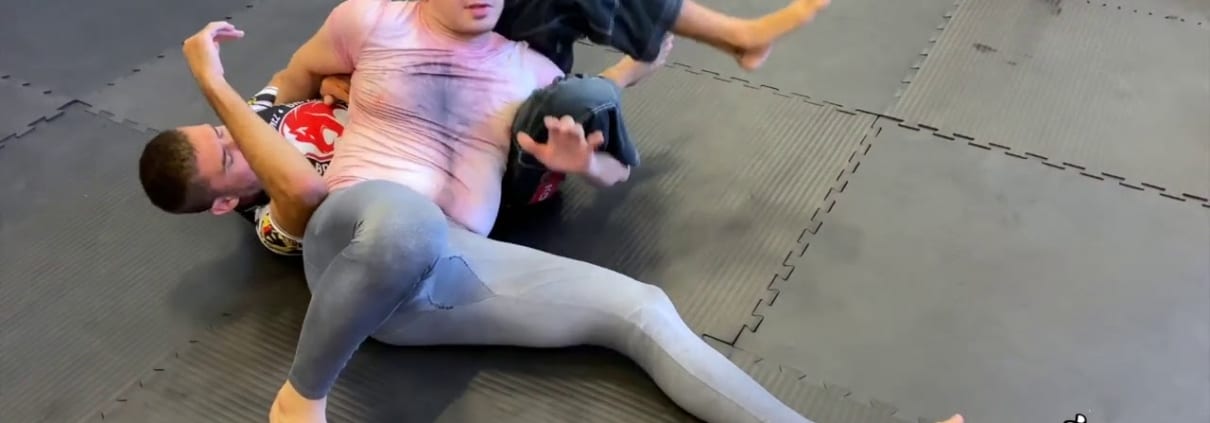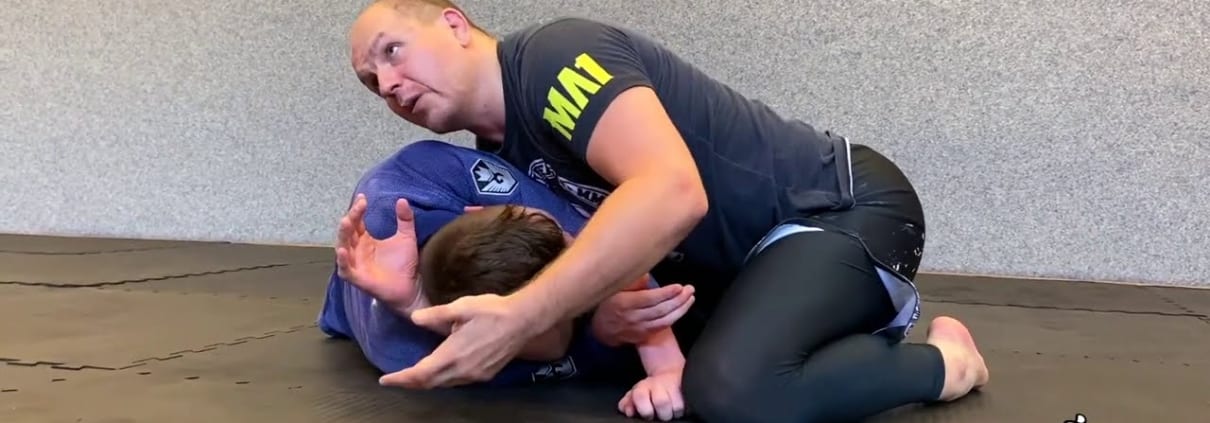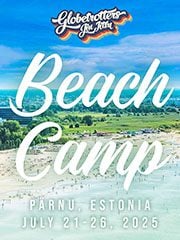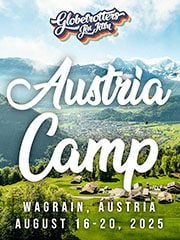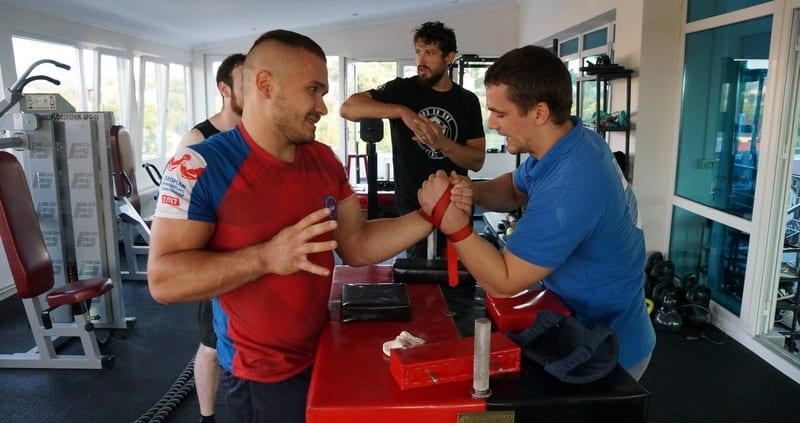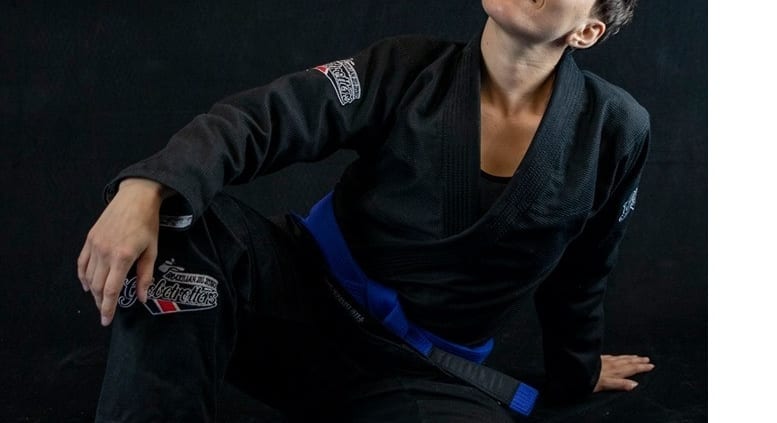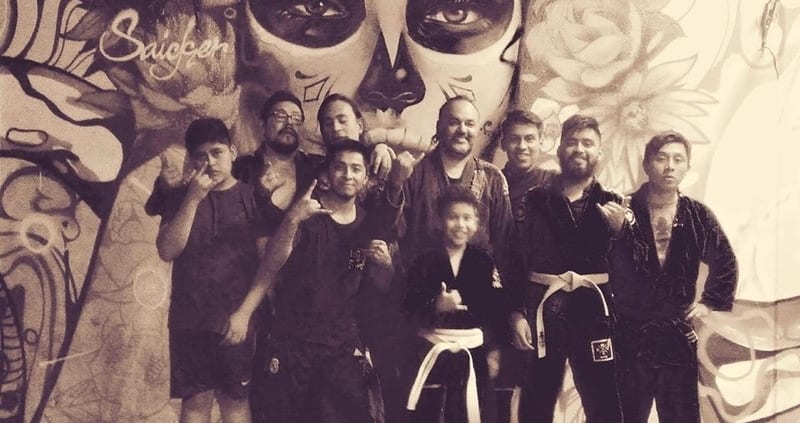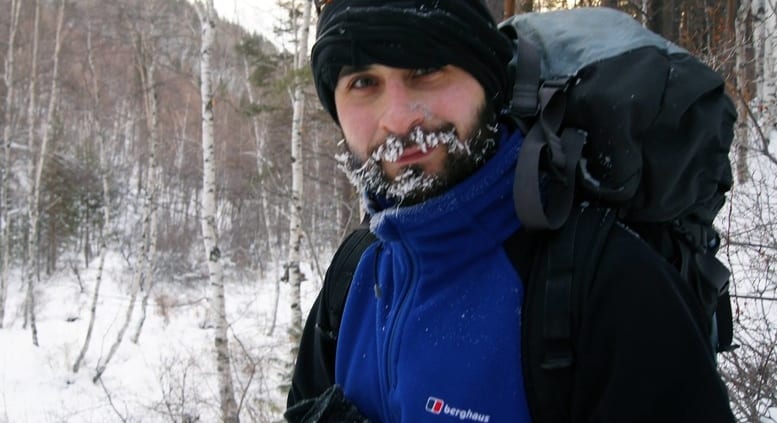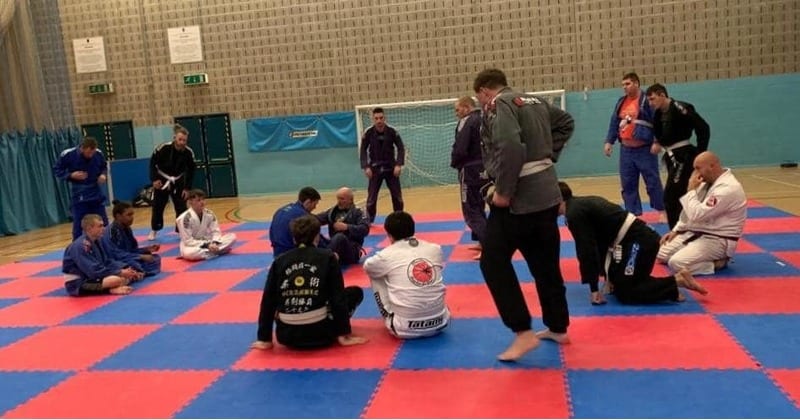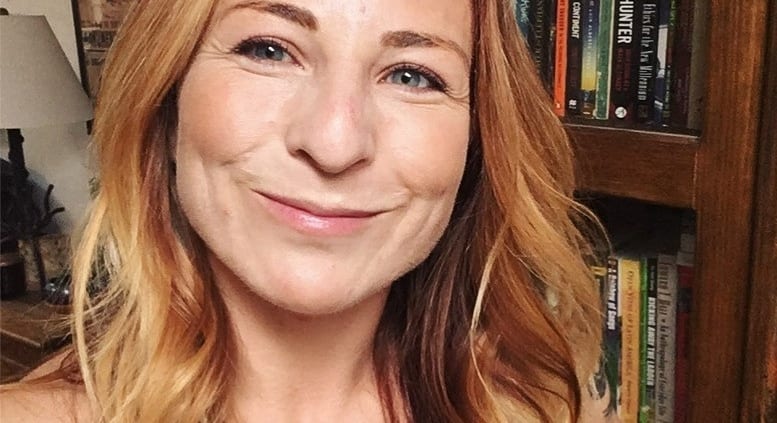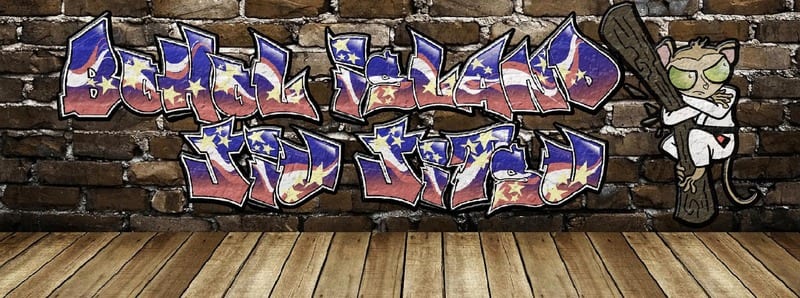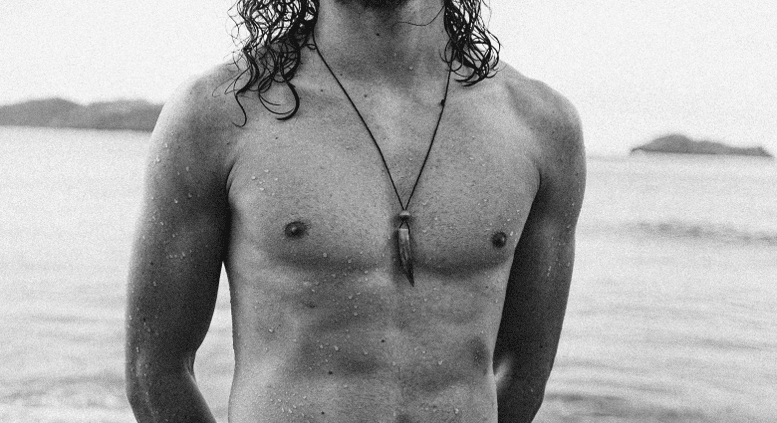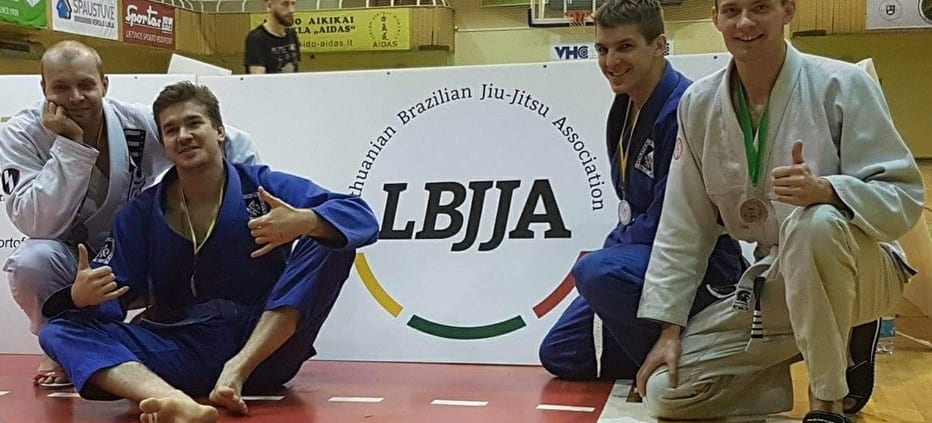Archive for month: August, 2020
Featured affiliated academy: Two on One Martial Arts, Romania BJJ
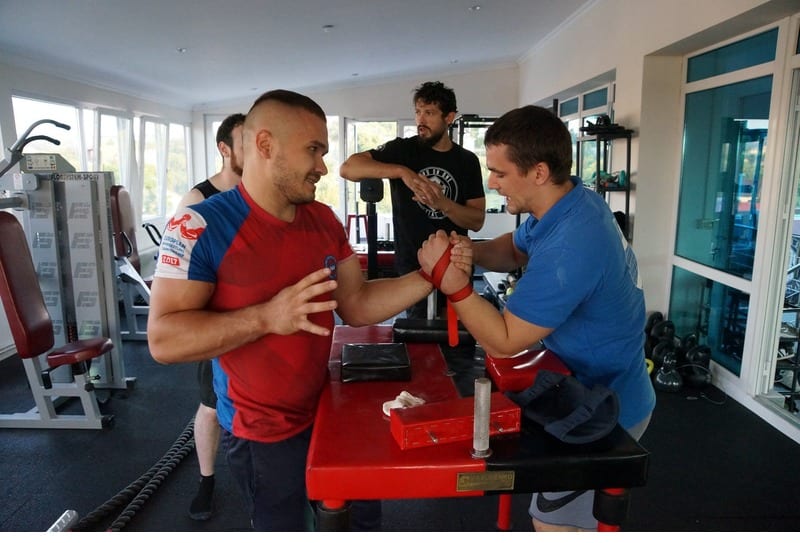
Where is the gym located?
In Iasi, Romania. Specifically on 2 Poitiers Street, 700671, Iasi.
How many people train there?
Approximately 100 across all our classes (BJJ – adults and kids, MMA, kickboxing, strength & conditioning, self-defense, arm-wrestling).
Is the gym growing – if so by how many new members each month or year?
Yes, it’s slowly growing. About 1-2 new people monthly.
What are the highest and lowest belt grades training?
The highest is purple belt and the lowest are the white belts.
When did the gym open?
The gym has been in our new/current location since January 7th 2019.

Some facts about you:
Name: Bogdan Toma
Age: 37
Academy: Two on One Martial Arts, Romania BJJ
Belt: Purple
Years in BJJ: 5
Other martial arts: MMA
Currently living in: Iasi, Romania
Originally from: Barlu, Romania
Please tell us the story of how your gym came into existence:
I always had the idea in mind. It all began more than 10 years ago, when I started training in MMA with a couple of close friends in my hometown. We had our own gym and we had very good results in MMA competitions with our students. Then, in 2015 I moved to Iasi and I started training here, at a friend’s gym, Absoluto Iasi, run by Mihai Godun, which was focused exclusively on BJJ.
After a while, we started thinking about opening a bigger gym in a new place, but all that fell through when Mihai moved to another country. While teaching in the absence of my friend, I met Tiberiu Popa, a very talented young man who joined the group shortly after. He helped me with the systematization of the training sessions for a good period of time, and so at one point I asked him if he wanted to join me into this new project. So in 2019, we finally did it: Two on One Martial Arts – a 350 square meter full-spectrum combat sports academy, still affiliated with Absoluto in the Brazilian Jiu Jitsu segment, which has Tudor Mihaita as head coach.
Overall, I can say that it hasn’t been easy, and we still have a long way to go, but I’m very hopeful and optimistic about the future of our academy and this sport in general.
Tell us about the people that train in the gym – who are they?
The people who train in Two on One Martial Arts, Romania BJJ have very different backgrounds: students, engineers, doctors, architects, IT professionals, etc. All brought together by the sport.
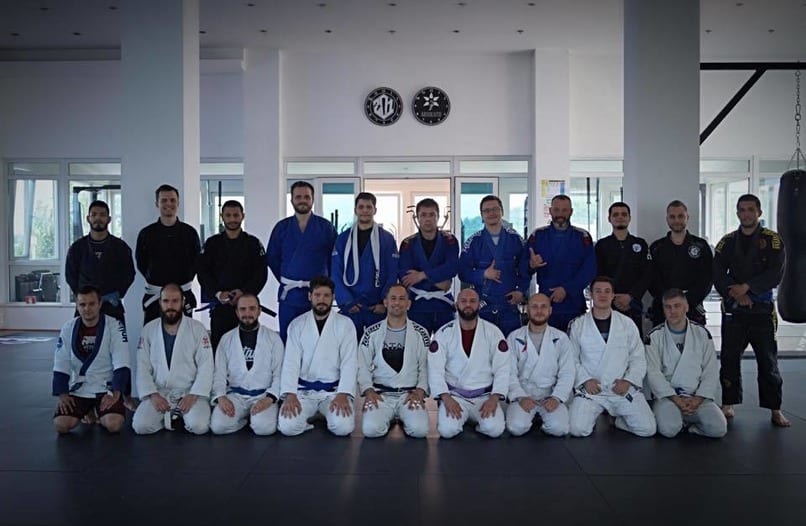
Why do they train?
To most of them, it’s a hobby; something they like to do outside their working hours. Whereas some of them come to the gym more frequently and usually participate in competitions.
What are some of the challenges of running a BJJ gym in general and in your location specifically?
In general, I would say the main challenge is having to deal with the fact that BJJ is still not a very well-known sport here, and in order to enjoy it you have to understand it first.
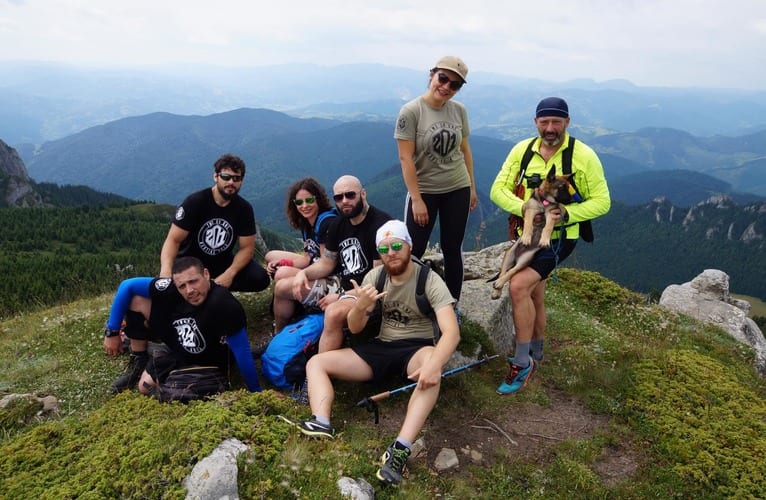
How do you see the future for BJJ in your area?
In my opinion, the future of BJJ in Romania will be down to the effort made by each and every academy, the devotion of the coaches, the organic growth of the community and the dissemination of good quality information in groups. Last but not least, there is a need for more well-organized competitions. I’m quite optimistic about the future of this sport in my country and worldwide, but I’m aware it will take some time to get there.
What’s the best thing about Two on One Martial Arts Romania BJJ?
It’s definitely the team and the fact that we’re a family and good friends outside the gym as well.
What would you recommend Globetrotters to see in your area apart from the inside of your gym?
Iasi is the second biggest city in Romania, and since it’s a university city you can find friendly people from different parts of the country and the world. The city has a lot to offer: culture, great food, nature, and exciting nightlife. Moreover, approximately 100 km away is the Ceahlau Massif, which is great for hiking or trekking.
Thanks for sharing with us! If you’d like to pay a visit to Two on One Martial Arts Romania BJJ, you can find them here.
Featured Traveller: Agnes Lisik – BJJ Globetrotters
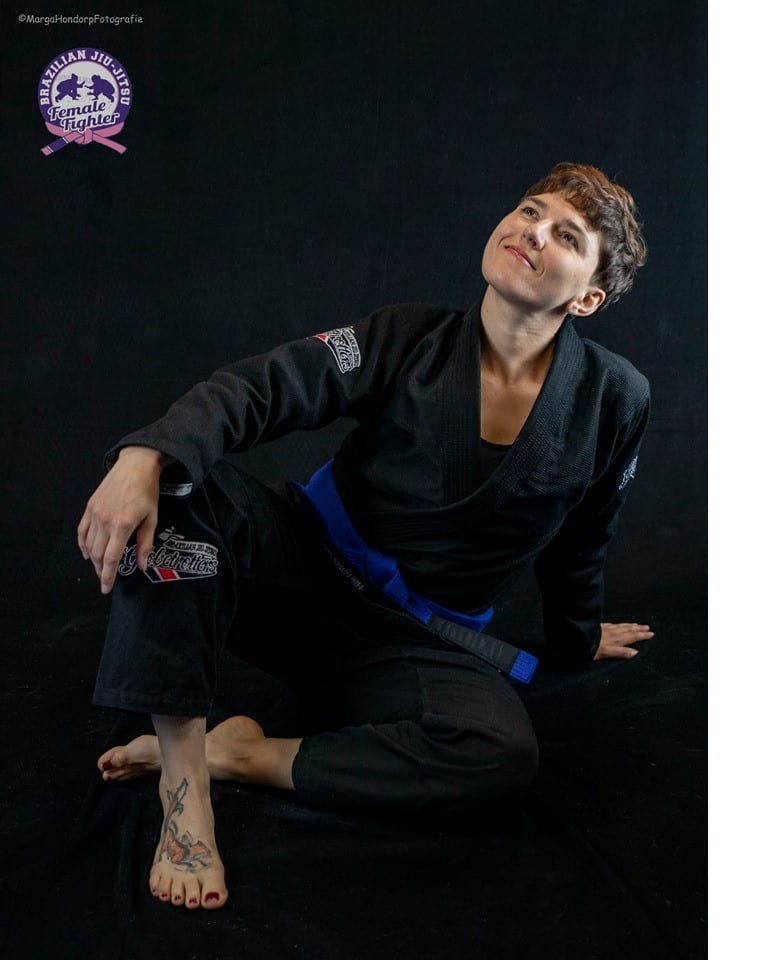
Agnes Lisik – BJJ Globetrotters
Age: Master 2
Belt: Blue, Icon BJJ (Pablo Cerino’s team in Brussels)
Profession: I’m a translator by training, but I worked in different jobs in my life, including fishmonger, journalist and currently, policy advisor in an environmental NGO.
How many years in BJJ: 3
Other martial arts: My first martial art love was Capoeira. I trained it regularly for about 3 years. I love how expressive it is, and how deep its cultural roots are. Now, I’ve just started historical fencing (HEMA) and picked up a sword thanks to having met a brand new bunch of martial art fanatics.
Thanks to that experience, and Ruadhán MacFadden’s podcast about our common grappling heritage, I start to discover how martial arts influence each other, and that everything is connected: wrestling, boxing, fencing… I hope to live long enough to take up boxing, and maybe even some MMA in the future, inshallah!
Where do you live: Brussels
Where are you originally from: Poland
Other fun or curious information you would like to share: Originally, I left my country for a mere five-month Erasmus student exchange in Spain. Now, it’s been 14 years living abroad and counting. I’m a migrant by default.

Agnes Lisik BJJ
Tell us what inspired you to travel and train?
Travelling is a way of life these days, be it for work or leisure. The world has shrunk so much! So far, I’ve lived in 3 countries, and visited around 30, mostly in Europe, which I love.
BJJ Globetrotters taught me to bring the gi with me wherever I go. I’ve visited different BJJ academies in Poland (Lodz, Gdansk), USA (Baltimore, Miami), Iceland (Reykjavik, Keflavik), Belgium (Brussels, Leuven), the Netherlands (Oss -sic!), Portugal (Ericeira), Spain (Vigo), the UK (London)… I usually travel solo and often I’m the only girl training in the club (never had an issue because of it).
Recently, I found out that a BJJ club is now present even in my home town of 30,000 people in the south of Poland. It’s impressive how much the Gentle Art is expanding.
Tell us about your most recent trip and your upcoming trips – where have you been and where are you going?
Almost all my holidays (and money ;) I spend on BJJ or other martial arts. I’ve just been to the BJJ Globetrotters Summer Camp in Heidelberg, Germany. On the first week of September, I organized a boot camp myself for 30 HEMA fencers in Stara Wies Dojo in Poland, the wonderful venue many Globetrotters know from Zen Camp. The HEMA community is awesome, but I think they need more integration and international exchange opportunities, like Globetrotters already do.
I have a Wanderlust syndrome, so I plan the next adventure even before my return journey. And I usually feel relieved only with a new ticket in my pocket and a new travel entry in my calendar. Next on my radar are weekend trips to Lithuania, Malta, and the beautiful Rhine Valley in Germany, full of castles and vineyards that I’ve recently discovered and keep coming back to in autumn.

Agnes Lisik BJJ
What are the things you enjoy about traveling?
I like the initially unpleasant and anxious thrill of stepping out of my comfort zone. It’s getting more and more difficult as time goes by, because with age we get more lazy, cozy, and comfy, but as long as you don’t kill that curiousity and thrill in yourself, you feel truly alive.
Can you give us some examples of experiences you had that makes it worth traveling and training?
Last year I was in Iceland twice. I couldn’t wait for summer camp, so I visited already in wintertime, as a stopover on the way to the US. In February, I got caught in a blizzard somewhere in the woods between Perlan museum and Mjölnir MMA gym. I thought that if I was going to die there alone and freeze to death in the dark, maybe some Globetrotter would find my body and gi in July. But I survived and got my daily BJJ dose. In that week, I went from training in subarctic Iceland to subtropical Miami.
Another crazy idea was when Robert Barker stayed at my place in Brussels on his Panda Odyssey, and then I spontaneously decided to join complete strangers on a quest to London to roll 24h at a charity Grappleton at Wave BJJ.
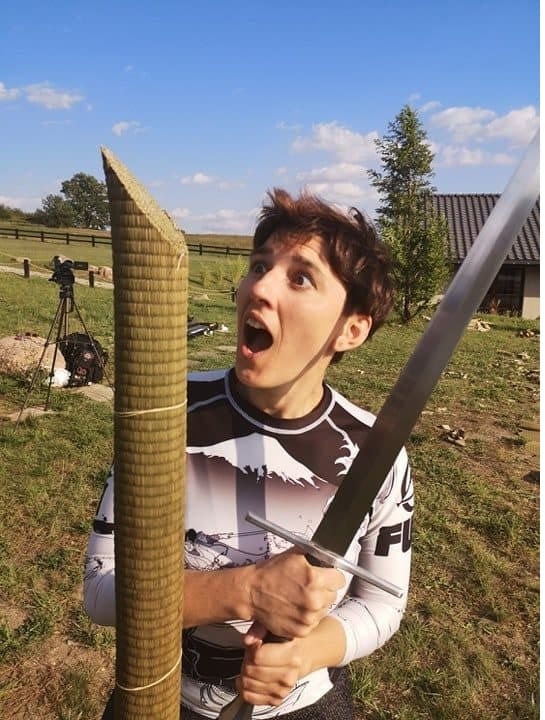
What has so far been the most surprising experience for you when traveling?
We are one. Whatever our nationality, religion, profession, political views, gender, etc., and whatever they say on the media in this polarized world, we are all just a bunch of naked apes who like to eat, roll, play, sleep, repeat. It’s also surprising how much we underestimate body language, whereas it’s the most natural way to communicate. BJJ for me was a way to reconnect with my own body, and at the same time notice that most of people don’t know their own bodies at all; they only use their most basic functions and fear getting physical in so many ways.
For me, BJJ creates a true community and real sense of belonging: we have the same goal and our own corporal language and common understanding: slap hands, bump fists and roll, then try to submit and not let yourself be submitted. BJJ, like any other serious martial art, I think, teaches a lot of respect and humility. We can potentially hurt our partners or get injured ourselves, so with such a “superpower” comes a big responsibility for the others. The Gentle Art taught me discipline, put a structure and purpose to my messy life, and healthily humiliates my ego and challenges my self-limitations on a daily basis.
Are you a budget traveller – and if so how do you plan for a cheap trip?
I’ve been using Skyscanner.net for years to map the best flight options, although I like travelling by train best and I try to do that more often. For accommodation, I use Booking.com – a very handy app that allows even last-minute decisions, although sometimes you can negotiate better rates if you call the property directly. Airbnb or couch surfing never really worked for me, because I don’t like to be dependent on others and their schedule. I am a highly functioning introvert moving at my own pace, so I appreciate single rooms and anonymity of hotels. I need privacy to recharge and prepare for my exhausting supernova blasts of social activity.
I used to get obsessed with planning my trips, whereas now I only plan “the anchors”: where I fly from/to and where I am going to stay on the first and last night. I like to keep “controlled spontaneity” and improvise in between those key points. I don’t plan what to see anymore – I got too overwhelmed and didn’t enjoy it anymore – except if there are any specific landmarks on my bucket list. I like just to wander around and absorb the genus loci, turn down the street that appeals to me most, and see how the place and me connect, and what mini-adventures spark in between. The cities where I was hit by such magic the most were Zurich, A Coruña, Valencia, and Zadar. I have a good sense of orientation and a radar in my head, so it’s difficult for me to get lost, but I try to make the path curvy enough to discover sidetracks.
If you were to pass on travel advice to your fellow Globetrotters, what would it be?
Don’t listen to others’ advice, check it out yourself ;) But if you really have to:
Always go full mental and don’t bother what others would say. Notice the beauty around you, even the little miracles, and let yourself be amazed, absorb, and appreciate it. Don’t miss the opportunity to do new stuff, because it may never present itself again, whether it’s a chance to train Icelandic wrestling (Glima), Irish Collar & Elbow, or try new dance, love, food or drink. The worst thing is to regret not having done something.

Thank you Agnes Lisik BJJ for doing this interview!
Featured affiliated academy: Ronin de Mexico BJJ

Where is the gym located?
Ronin de Mexico BJJ is located very close to Mariachi Plaza in Garibaldi, the historic downtown of CDMX (Ciudad de México, aka. Mexico City).
How many people train there?
It depends on the day and the season. Approximately 10-15 people per class.
Is the gym growing – if so by how many new members each month or year?
It also really depends on the season. People come and go. We’re a small team, but with a long tradition in the city.
What are the highest and lowest belt grades training?
From complete beginner to black. The majority are blue and purple belts.
When did the gym open?
Ronin de Mexico started back in 2005.
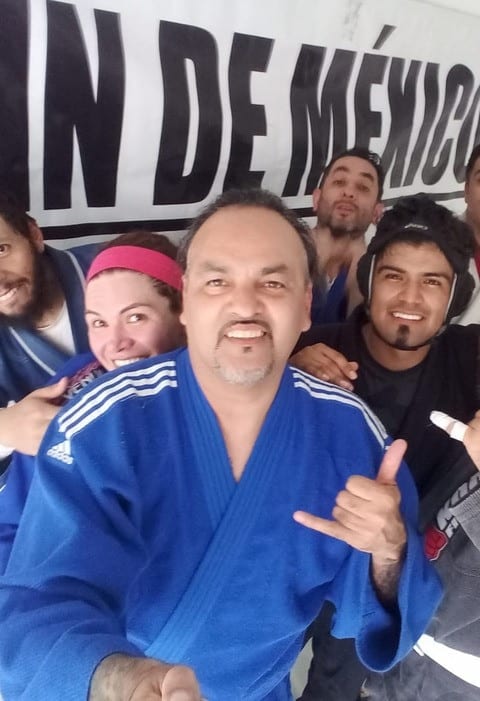
Some facts about you:
Name: Miguel Angel Cortes Oliva “Thrasher”
Age: 53
Academy: Ronin de Mexico BJJ
Belt: Four-stripe brown belt
Profession: Musician , promoter, producer
Years in BJJ: 14 years
Other martial arts: Grappling, MMA
Currently living in: Mexico City, also known as CDMX
Originally from: I’m a local born in Tenochtitlan (the ancient name for CDMX)
Please tell us the story of how your gym came into existence:
It’s a long story! Back in 2004, when I was 38 years old, I went looking for Aikido classes, but a friend told me about BJJ instead. At that point there was only one BJJ dojo in CDMX, and it was very expensive. I went anyway. The classes were usually taught by a blue belt, since the sensei (a purple belt) was travelling very often so I hardly ever actually got to take any classes from him. Then I travelled to Japan and trained at Axis BJJ. It was also very expensive, so I was only able to attend once a week.
When I got back home, me and some other friends started trying to find some space where we could train and roll more, and I came up with the idea of renting a small room. We used some tatami mats from another friend who taught Aikido. Lots of people came on the weekends to roll with us; people from other schools, but in secret, since in those days you were forbidden to do that because of the CREONTE THING (that’s how the name “Ronin” first came to mind). I started to run grappling classes, and that eventually lead to the opportunity for some different affiliations. In the end, we decided to split, and some friends ended up running two separate academies in the same building on the same floor as me. Between the three academies, we were visited by some great teachers and champions, including Ratinho, Felipe Costa, Casquinha, Royce Gracie, Terere, Cobrinha, Jeff Monson, Durinho, Davi Ramos, Marcelo Garcia, and a few others.
Then the building was sold, so we had to move and now we’re very close to downtown.
Tell us about the people that train in the gym – who are they?
Most of my students are people over 30 who live or work far away, in and around the CDMX area. They often have a low budget, so they can’t afford to pay most of the other dojos’ fees. We run self-defense classes, and from that more girls have started taking regular BJJ classes with us now too.

Why do they train?
Most of them are into BJJ because it teaches many things that they can use in real life. Things like discipline, health, self defence, and managing their egos; all the positive things that BJJ offers besides camaraderie and friendship.
What are some of the challenges of running a BJJ gym in general and in your location specifically?
Most of the other academies in the city are trying to compete with each other. Not so in our case. We’re not aiming to grow into a huge group – you know, quality not quantity. The main challenge is to manage your own demons, and of course have enough students to pay the rent haha!

How do you see the future for BJJ in your area?
It’s growing slowly but constantly. MMA is really prompting more people to start looking for some BJJ/grappling knowledge.
What’s the best thing about your gym?
We consider Ronin de Mexico BJJ as a social project more than a business gym. We preach self-management, mutual support, and solidarity. Another thing worth mentioning is that we’re able to open 24 hrs a day, 365 days a year. We open on Sundays and holidays, and we’re a very friendly team. Everybody is welcome!
What would you recommend Globetrotters to see in your area apart from the inside of your gym?
Well, we’re just few steps from Garibaldi Plaza and the historic downtown (Zocalo) of CDMX. And there are lots of museums around, so you have plenty of options.
Thanks for sharing with us! If you’d like to pay a visit to Ronin de Mexico BJJ, you can find them here.
Featured Traveller: Jacek Klimko – BJJ Globetrotters
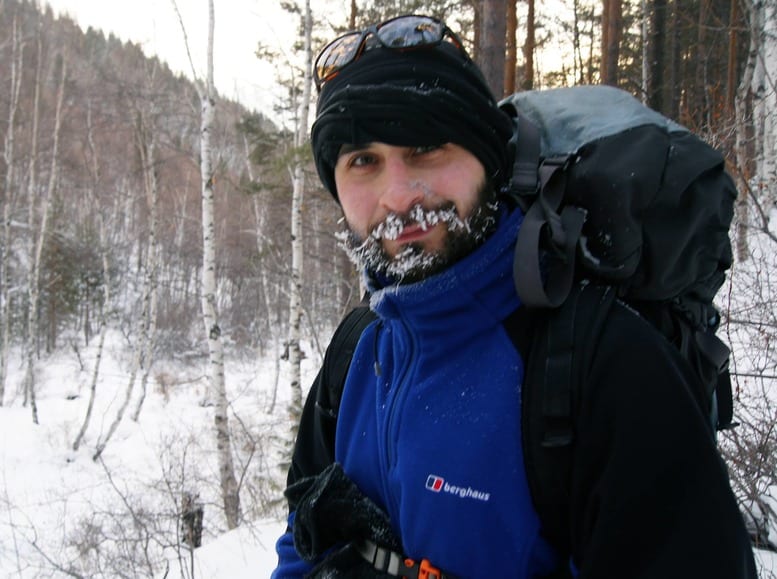
Jacek Klimko – BJJ Globetrotters
Age: 36
Belt: White
Profession: Yoga teacher, massage therapist, writer
How many years in BJJ: One
Other martial arts: Some Aikido when I was young. When I grew disillusioned with it, I took up Krav Maga… which proved to be quite similar to Aikido, but more violent.
Where do you live: Swansea, Wales
Where are you originally from: Poland
Other fun or curious information you would like to share: I once spent over 3 years travelling the world on my motorcycle.

Jacek Klimko BJJ
Tell us what inspired you to travel and train?
Working in the corporate world could have had only two effects on me:
1. Send me mad
2. Make me want to do something more interesting with my life
Luckily, the latter happened first.
Tell us about your most recent trip and your upcoming trips – where have you been and where are you going?
Most recently, I spent 6 months in Asia. On this occasion, it was all about learning. First, I spent 2 months in Thailand learning the art of Thai massage. Next was Bali. I travelled to this beautiful island to develop my yoga practice. Finally, after two months of intensive practice, I travelled to India to qualify as a yoga teacher.
I’d love to go to Japan next. I used to travel mainly to see interesting places and to meet people from different cultures. Now I seek experiences. So for example, if I were to go to Japan, I’d want to immerse myself in the culture, in this case by training kendo, judo, or learning to do raku pottery.

Jacek Klimko BJJ
What are the things you enjoy about traveling?
I’ve always believed that travelling should be challenging, either physically or mentally; that it should be an opportunity to face your own limitations, fears, and prejudices; to challenge who you are and shake the foundation of your being.
I travel to return a different person; more able, open minded, trusting, caring, connected with other people (both in their joys but also in their sorrows)… simply a better me.
More conventionally, I really enjoy tasting local dishes.
Can you give us some examples of experiences you had that makes it worth traveling and training?
It must be waking up at 4 am in Darjeeling in Northern India and seeing the rising sun over Kangchenjunga, the third highest mountain in the world. The view was magnificent, like molten gold pouring over the peaks.
What was even more special about this experience was the fact that just one week before I almost gave up on travelling in India and went home. In Kolkata I got sick and spent an entire week between my bed and toilet. Add to that other numerous frustrations that I experienced around that time, and my spirit was near-broken. I got what I wanted, a challenge, and I couldn’t take it.
Georges St-Pierre said it well:
“You don’t get better on the days when you feel like going. You get better on the days when you don’t want to go on, but you go anyway. If you can overcome the negative energy coming from your tired body or unmotivated mind, you will grow and become better. It won’t be the best workout you have, you won’t accomplish as much as what you usually do when you actually feel good, but that doesn’t matter. Growth is a long-term game, and the crappy days are more important.”
These were indeed “crappy days”, but I persevered, and I’m so happy I did – because what I saw just a few days later in Darjeeling was more than worth it. In a way, I feel that this make or break experience made me through breaking me.

What has so far been the most surprising experience for you when traveling?
One day, when travelling through northern Iraq on our motorcycle, my wife and I stopped by the side of the road to cook. Soon, curious about this unusual sight, a small crowd of people materialised around us. Everyone was welcoming and friendly, so we enjoyed a bit of company. Once it was ready, we shared our simple dish. When we were ready to leave, one of them, Abbas, asked us to come with him to his house. We accepted. After spending a few hours with Abbas and his family, we felt it was time to leave. We were planning on reaching the next town that same day, but when asked to stay overnight, we happily accepted the offer. A few hours later, when it came to sleeping, we were given a mattress and some blankets, and were shown where to sleep.
Just before hitting the pillow, we realised that we’d been given the only room in the house, and the entire family had gone to sleep outside on the concrete. We couldn’t believe it. Their hospitality was unprecedented; they went out of their way, giving their house and comforts away, just to make us feel welcome.
Are you a budget traveller – and if so how do you plan for a cheap trip?
Having left my job to travel the world indefinitely, budget had to be a serious consideration. Travelling on a motorcycle proved to be a perfect solution. It gave us freedom and adventure, but also allowed us to save a lot of money. We’d cook our own food whenever possible, sleep at least a few nights a week camping wild or couchsurfing. Also, travelling slow proved to work to our advantage. We’d rent rooms or even entire apartments, sometimes for months at a time (for example, we had a flat in Batumi, Georgia for close to 4 months). This way, we could make friends and really get to know the area, and at the same time live on a tiny budget.
Later we discovered house sitting, which within just a couple of years we used more than 30 times. We house sat in Thailand (almost 2 months), north Wales, Scotland, and many other attractive destinations.
If you were to pass on travel advice to your fellow Globetrotters, what would it be?
Always go with the flow. Be kind, be easy going, be considerate.

Thank you Jacek Klimko BJJ for doing this interview!
Featured affiliated academy: Merthyr BJJ Wales

Where is the gym located?
We train inside the local leisure centre called Merthyr Leisure Centre. It’s at the heart and soul of the town in which we are based – Merthyr Tydfil (Wales). This is a large town and borough about 30 miles from Cardiff and Swansea, and close to the beautiful Brecon Beacons.
How many people train there?
We have on average 17 people training per session. This can go down as low as 6 and as high as 22.
Is the gym growing – if so by how many new members each month or year?
Every month the club sees new students trying out BJJ with us, as well as existing practitioners trying Merthyr BJJ.
What are the highest and lowest belt grades training in Merthyr BJJ Wales?
We range from absolute novices to a blackbelt.
When did the gym open?
We’ve existed for around 8 years, but we were part of a larger academy up until 16 months ago, when us and our sister clubs (Rob Taylor Jiu Jitsu in Cardiff and the MAT Academy in Treforest) disbanded and became independent of the Chris Rees Academy. Since then we moved premises, and then settled within the leisure centre, where we have now set up home!
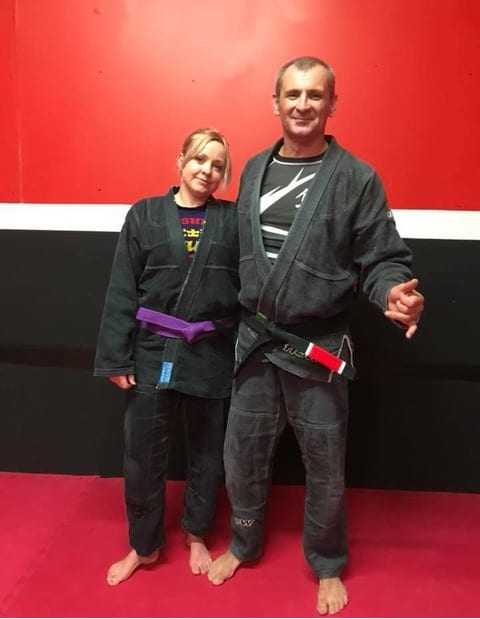
Some facts about you:
Name: Alyn Weyman
Age: 47
Belt: Black belt (September 2018)
Academy: Merthyr BJJ Wales
Profession: Firefighter
Years in BJJ: 15
Other martial arts: Karate from aged 12. I competed internationally and won several titles.
Currently living in: Merthyr Tydfil, Wales
Originally from: Rhymney Valley
Please tell us the story of how your gym came into existence:
When i decided to retire from karate, I began taking BJJ lessons under Chris Rees and I instantly fell in love with the sport. In between my shifts as a firefighter, I tried to travel down at least twice a week to attend classes. I also began training BJJ with a few friends who had strong interests in BJJ and MMA in Merthyr. Before I knew it I was competing, and as a blue belt, under the guidance of my instructors, I opened a class in a friend’s dojo and set up the first BJJ classes in the town. Several years and moves later, we have Merthyr BJJ in its current form. We now train twice a week, and it seems a very long way away from being in a cold warehouse to the heated flooring we have now!
It has always been about making long thought-out decisions and taking the plunge to try and better the club and the facilities for those who train with us. It’s now a club that myself and my partner Rebecca run and have set up a beginners fundamentals programme as well as advanced classes in both gi and nogi.
Tell us about the people that train in Merthyr BJJ Wales – who are they?
We have male and female students from 16 to 63 training with us. The majority are male. We have many overseas students, as the demographics of the town means we see people who’ve moved to the surrounding areas from outside the UK. We have local, national, and international medalists, as well as people who have and will not ever compete. There is absolutely no pressure on people to compete.
We have students with backgrounds in stand-up martial arts and those with keen interests in MMA who’ve come to us to add skills to their ground games. We cater for people with physical and mental disabilities. We also have students who have conditions such as diabetes.
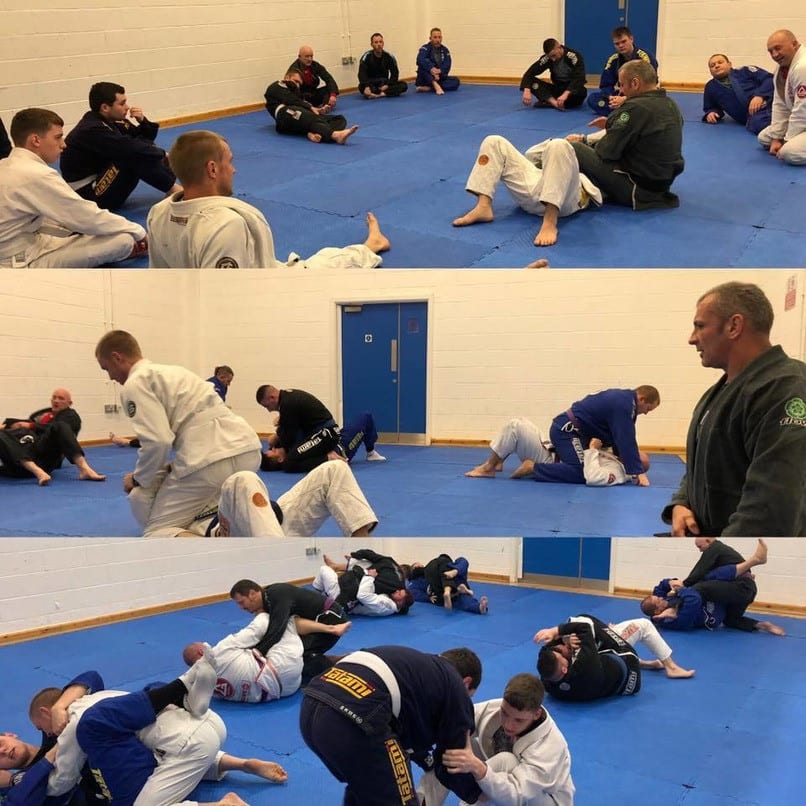
Why do they train?
The majority of our students train because BJJ is their hobby. We have people who wish to compete in BJJ and MMA, and mainly they want to improve their fitness and skill set. Rugby players come to us to improve some of their skills as well as body conditioning.
What are some of the challenges of running a BJJ gym in general and in your location specifically?
Merthyr is known to be an economically deprived area, so £5 per lesson is a struggle for some students, and when you factor in buying a gi and insurance, this can sometimes be off-putting. The fees of competing can be extortionate, and as many people will gauge their progress on results, getting the money together for even local competitions (let alone any of the very expensive IBJJF ones) could prove to be a barrier. Getting appropriate marketing material designed and printed to encourage new students has been one of the challenges. Keeping hold of existing students has also proved to be quite difficult, as we have very little say in moving the times and days of the classes.
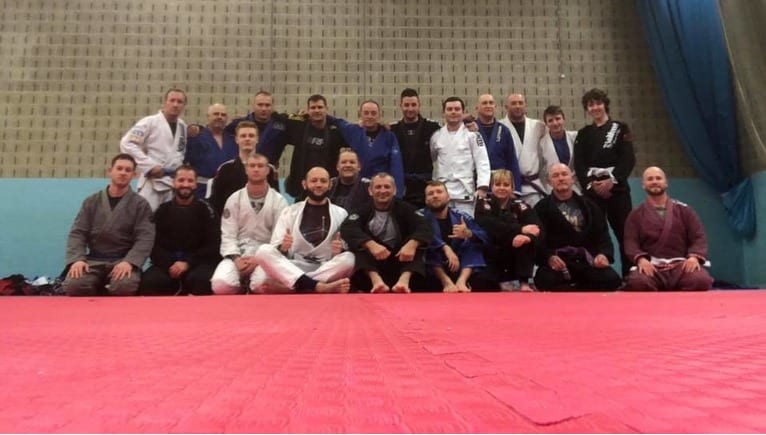
How do you see the future for BJJ in your area?
The future of BJJ in south Wales looks promising. When world champions hold seminars nearby, it proves that there are sufficient numbers interested and training. The likes of Brett Johns, John Philips, Jack Marshman, and Jack Shore are all in the UFC and have all trained BJJ locally. That is not something we should overlook. The number of people that approach us and ask us to begin a children’s class is phenomenal.
What’s the best thing about your gym?
After years of training in warehouses, it has to be heat! Heat and the range of students we have As long as we have people smiling when they train with us, that is as good as anything to see!
What would you recommend Globetrotters to see in your area apart from the inside of your gym?
We live in a beautiful part of the country, and have many outdoor activities that can be done here due to the geography of the land. We have the internationally known Bike Park Wales (a fantastic facility for lovers of mountain biking, which we also do!), we’re right on the doorstep of the Brecon Beacons, with plenty of scenery to take in, as well as many castles for a bit of a history lesson.
Thanks for sharing with us! If you’d like to pay a visit to Merthyr BJJ Wales, you can find them here.
Featured Traveller: Heather Raftery – BJJ Globetrotters
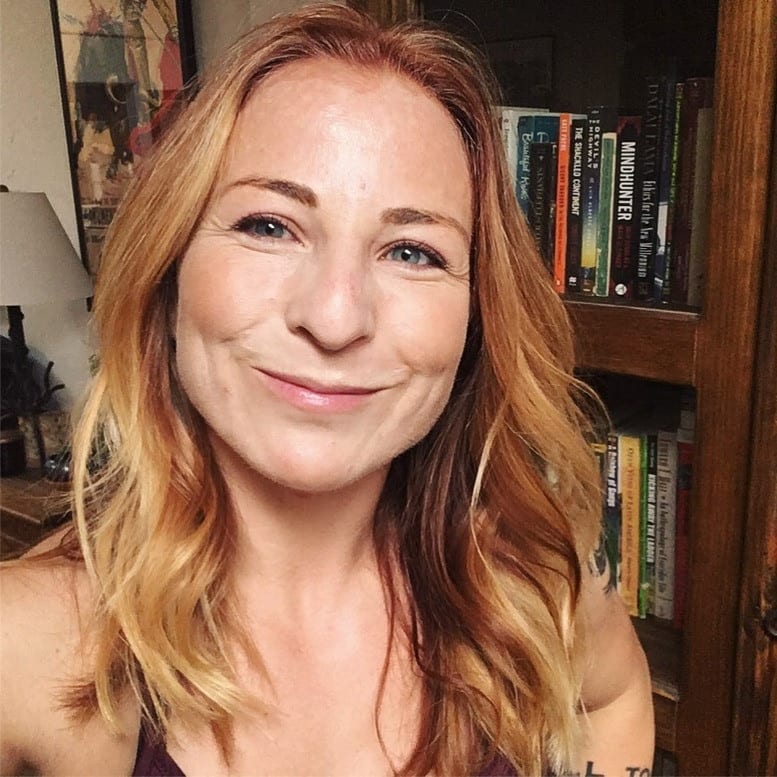
Heather Raftery BJJ
Age: 33
Belt: Black
Profession: Freelancer
How many years in BJJ: 11 in January!
Other martial arts: Doughjitsu – the art of sneaking into the freezer at night and picking out all the cookie dough pieces from ice cream container while everyone is sleeping.
Where do you live: Mother Earth
Where are you originally from: Tucson, Arizona (USA)
Other fun or curious information you would like to share: I’ve lived in a VW bus for nearly two cumulative years (total, with breaks here and there), which I painted myself and named Bonnie Clyde. I’m currently staying in it for a month while training in San Diego, preparing for No-Gi Worlds. I used to ride horses competitively in an equestrian sport called “cutting” (my dad is a horse trainer and former professional bull rider) and I was once a world champion in that. Hung up my spurs in college and then started wrasslin’ people. I have two fur babies: Mr. Fleabags and Gooby the Goblin Hunter.
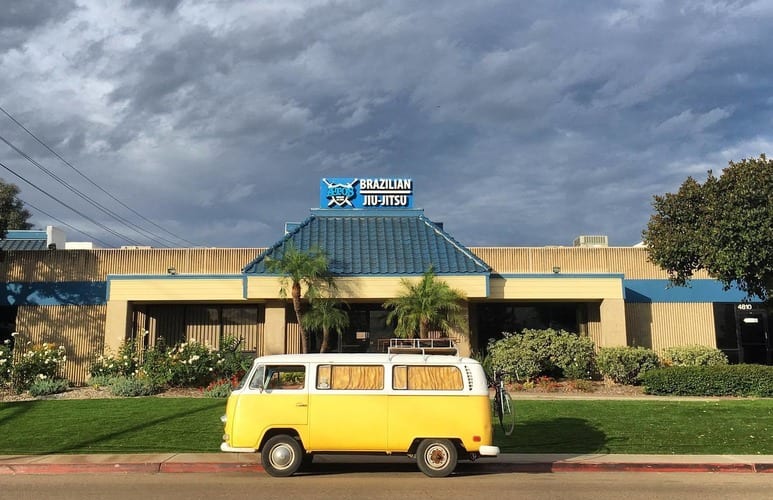
Tell us what inspired you to travel and train?
Growing up riding horses, we always traveled to other states to compete. When I started training Jiu Jitsu, it was more of the same. In college, I discovered my love for traveling internationally – visiting new, exotic places and experiencing cultures wildly different, and yet in many ways remarkably similar to my own. Luckily, I started Jiu Jitsu at a time when it had already found roots in most major cities around the world, so my gi and rashie always had a place in my travel bag, wherever I went.
Tell us about your most recent trip and your upcoming trips – where have you been and where are you going?
I’ve trained Jiu Jitsu on six continents (Antarctica, I’m coming for you!). My most recent international trip was to Thailand to reunite with one of my very first training partners, Alex Schild, now a Jiu Jitsu coach at Tiger Muay Thai. From there I went straight to Australia, where I trained for over a week with Lachlan and Livia Giles and their awesome (and hilarious team) at Absolute MMA. Then I was guest instructor at the incredible 4-day Australian Girls in Gis camp, put on by my good friend Jess Fraser, at a real campsite waaaaay out in the boonies with no Wi-Fi. In all, it was definitely one of the funnest trips of my life. I’m hoping to plan a U.S. road trip in the Bonnie Clyde for 2020. I want to try to see as much of my home country as I can (though I’m sure I’ll break down and get stranded half a dozen times).

Heather Raftery BJJ
What are the things you enjoy about traveling?
The excitement of not knowing what’s around the next bend, what you’ll be doing that day and the next, or who you’ll meet along the way. It’s cliche, but every day really is an adventure. You become addicted to that cocktail of adrenaline and dopamine. And with traveling, not only do you escape the mundane, but also the comfort of a predictable routine, both of which stunt personal and spiritual growth.
Can you give us some examples of experiences you had that makes it worth traveling and training?
There have been several times in my Jiu Jitsu travels that I’ve become incredibly close to a group of fellow practitioners, despite the relatively short time I was there. For instance, several years ago when I was a purple belt, my work sent me to Colombia for about a month, where I trained at Affinity Colombia in Bogotá. They were some of the most warm and welcoming group of people I’ve ever come across, from the very second I stepped on the mats. Even to this day I still receive lovely messages from my Colombian family. This has happened several other times, around the U.S. and internationally; where I’ve met people that I instantly connect with, despite any cultural differences or language barriers. Some I could swear that I’ve met in a past life.
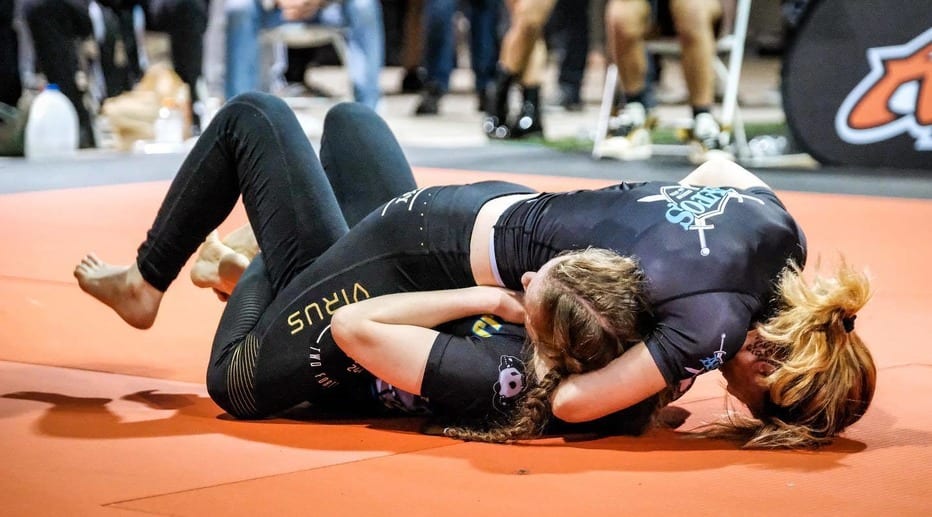
Heather Raftery BJJ
What has so far been the most surprising experience for you when traveling?
I’m continually amazed at how much people will go out of their way to help a complete stranger. In this day and age, it’s easy to get discouraged about the fate of the human race, but traveling renews your belief in humanity.
Are you a budget traveller – and if so how do you plan for a cheap trip?
Absolutely. The less I have to spend on the nuts and bolts of traveling (airfare, transport, accommodations), the more I can spend on the experiences. Of course, #vanlife is probably the most budget you can get, but unless I have unlimited time to get there (the Bonnie Clyde’s top speed is 55mph/88.5kmh), it’s not the most convenient at times. If I’m traveling internationally, I usually try to get the cheapest tickets I can… risking multiple, long layovers, red-eye flights, and traveling on low-demand days. I also try to tap into the local Jiu Jitsu community wherever I’m going, as a kind-hearted jiujiteiro will usually offer rides and sometimes accommodation. If that happens, I always try my best to repay the favor in whatever way I can.
If you were to pass on travel advice to your fellow Globetrotters, what would it be?
Be up for anything, and don’t sweat the small stuff. When you’re up for anything, you’ll always come home with the best stories to tell. As for the second part, shit will always happen when you’re traveling. That’s the nature of the beast. Learning to recognize them as small bumps in the road will keep you from expending unnecessary emotion and energy worrying or getting upset about them, and help you become a more flexible, easy-going traveler… and a more zen human being.
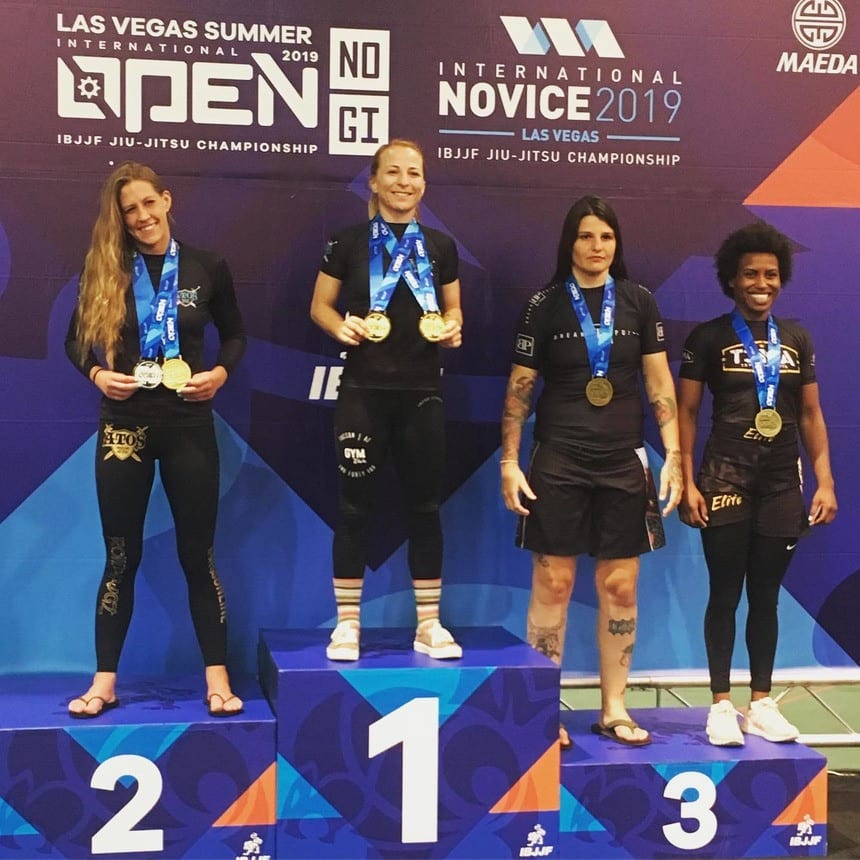
Heather Raftery BJJ
Featured affiliated academy: Bohol Island Jiu Jitsu Philippines
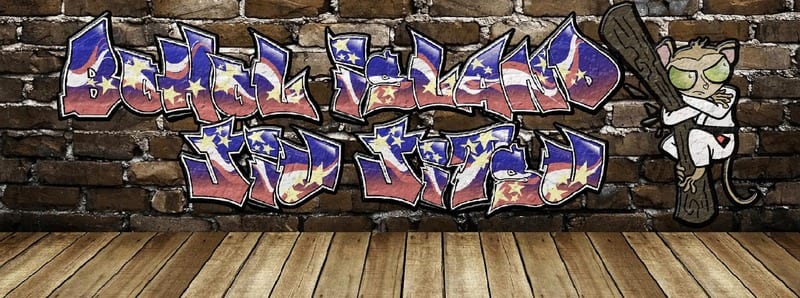
Where is the gym located?
Bohol Island Jiu Jitsu is located in Tagbilaran City, Bohol, which is right smack at the center of the 7,107 islands in the Philippines. Our island is a very touristy place, with a lot of nature and great beaches, and the smallest monkey in the world – the Tarsier (our logo) – can be found only on our island. Currently we’re the only BJJ school here.
How many people train there?
In total Bohol Island Jiu Jitsu Philippines has around 20 members registered, but the consistent numbers we get are about 50% of that.
Is the gym growing – if so by how many new members each month or year?
Since most of our members are students, and we don’t have a lot of job opportunities here, people tend to move to other bigger islands in the Philippines so once they graduate. So to answer the question – we are growing, but people also leave every now and then.
What are the highest and lowest belt grades training?
White belts, blue belts, and purple belts.
When did the gym open?
Bohol Island Jiu Jitsu Philippines started in 2014 in an old Taekwondo gym. Since then we’ve moved to a newer location.
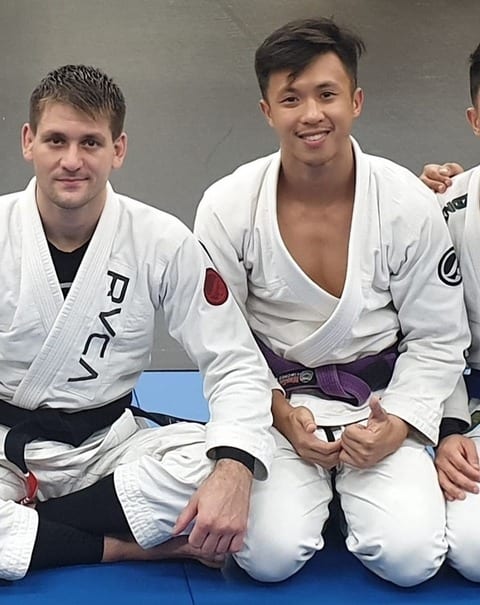
Some facts about you:
Name: Jay Uy
Age: 31
Belt: Purple
Profession: Manager
Years in BJJ: 11
Other martial arts: Boxing
Currently living in: Tagbilaran City, Bohol
Originally from: Tagbilaran City, Bohol
Please tell us the story of how your gym came into existence:
I started training BJJ in 2008 in Cebu City, where I attended university. Every now and then when I went back to my hometown, I would teach and train with my brother, who had also started training in Manila under a different team. I would seek out MMA gyms and other martial arts gym here in Bohol just to be able to train. On the weekends, I’d take a 2-hour boat ride to Cebu to train with my old team and try to keep learning from my coach there. In 2013, when I was still a blue belt, a big earthquake hit my island and a lot of the buildings got damaged. A year afterwards, in 2014, I learned that another blue belt from New York was in town and was actually based here. So I tried to reach out, knowing he was teaching at a local Taekwondo gym here. After a few months training with each other and a few beginners, he decided to name the team Bohol Island Jiu Jitsu.
Tell us about the people that train in the gym – who are they?
Most of the guys that train with us are from here – they really started from scratch with me, John, and my brother Ton. The majority are students that go to school in the morning and train with us at night, like Julliver, Vincent, Arman, Ali, and Milven. Some of our senior members like JM, Luther and Vic have jobs during the day, so most of our classes are at night only.
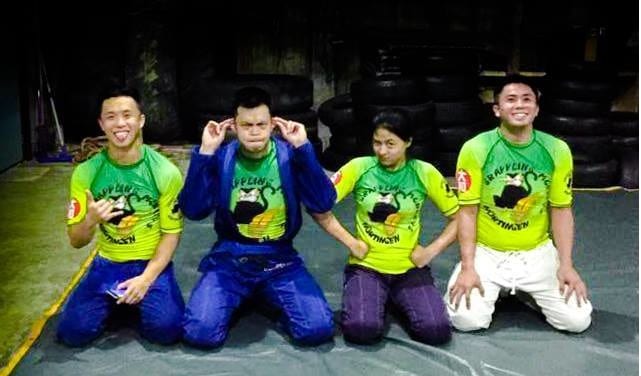
Why do they train?
They really do love Jiu Jitsu and enjoy learning from each other. I guess for the younger members it’s for fitness and self confidence. Our older members would say it’s such a big stress relief from work as well.
What are some of the challenges of running a BJJ gym in general and in your location specifically?
For me it’s a passion project. I really enjoy teaching and spreading BJJ, and learning from different people, so I’m not in it for the business side. However, paying the bills can get pretty stressful at times as well. When people leave to pursue a career elsewhere, we also lose members. Losing people can be pretty frustrating. On the other hand, I’m happy they started with us and when I see them do well in competitions in other countries. Also, in our area time can move pretty slow, and some of our members can get pretty lax at times when it comes to training. Especially if comp season is over.

How do you see the future for BJJ in your area?
Hopefully, other teams or gyms can start as well in order to have more BJJ spread out in the other towns. Economically our city is growing, and population also increases along with that. When jobs start pouring in, people that have trained on other islands might want to come work here as well, and either train with us or start their own schools. I see a ton of potential here. We don’t have a black belt yet on our island, and maybe one day if not me, one of my students would be the first home grown Boholano black belt.
What’s the best thing about your gym?
Bohol Island Jiu Jitsu Philippines is just a small gym, but between me, John, and my brother Ton, we have a total of 33 years of experience between us. John started in 2008 in New York – he has his own style of teaching. My brother Ton also started in 2008 with our current Professor, Ali Sulit in Manila, and he incorporates a lot of the ATOS-style techniques. Our gym also has a lot of tourists that drop by every now and then to train with us. You never know when a group of 3 people from Australia will show up at the exact same time a Swiss purple belt said he would drop by to train as well. Plus the beach is just a few minutes away from us too. :)
What would you recommend Globetrotters to see in your area apart from the inside of your gym?
Panglao Island is where all the best resorts are – we have world class beaches there. Also a great spot to try and learn diving, or hop on a boat to go visit other smaller islands. Bohol can offer tons of dive spots around the island. We have beautiful reefs and the diversity of marine life here will amaze you.
The Chocolate Hills are a couple of hours drive from Panglao or the city. It’s a UNESCO World Heritage site where 1,260 hills turn brown in the summer season and resemble Hershey kisses. To get there you can either join a tour or drive, but on your way there be sure to also visit the Loboc River cruise where you can have lunch, and the man-made forest in Loboc and Bilar towns.
The Tarsier Sanctuary is also a must-visit if you’re here. The monkeys are endangered, and although some can be found in the wild, the sanctuary is the best place to find and learn about these nocturnal creatures.
You can also rent a motorbike or go on a countryside tour, where you never know when you’ll stumble upon exotic caves, stunning rice fields, fireflies in mangroves, very old churches, or great views from mountaintops.
Thanks for sharing with us! If you’d like to pay a visit to Bohol Island Jiu Jitsu Philippines, you can find them here.
Featured Traveller: Stevie Antoniou BJJ

Stevie Antoniou
Age: 24
Belt: Black
Profession: Freelance photographer and filmmaker
How many years in BJJ: 8
Other martial arts: Nope
Where do you live: In Stockholm, but I’m traveling more than I’m at home. :)
Where are you originally from: Stockholm, Sweden
Other fun or curious information you would like to share: Parents are Greek/Irish and Swedish/Estonian.

Tell us what inspired you to travel and train?
Honestly, I’ve always met inspiring people when traveling, and that’s what keeps me going. Combining it with Jiu Jitsu is perfect because you get to meet locals wherever you are and make friends in a matter of minutes of stepping on the mats.
Tell us about your most recent trip and your upcoming trips – where have you been and where are you going?
Well, if this year’s travel counts as recent then I have 17 trips to tell you about… Go to my Instagram for all that. These past two months I’ve been to France, Poland, Arizona, and Oregon. Currently in a hammock between two palm trees in the Caribbean. I’m in St. Barth for a month and then I’m going home just before Christmas. I’m heading to Asia in mid-January for a month or five. We’ll see haha
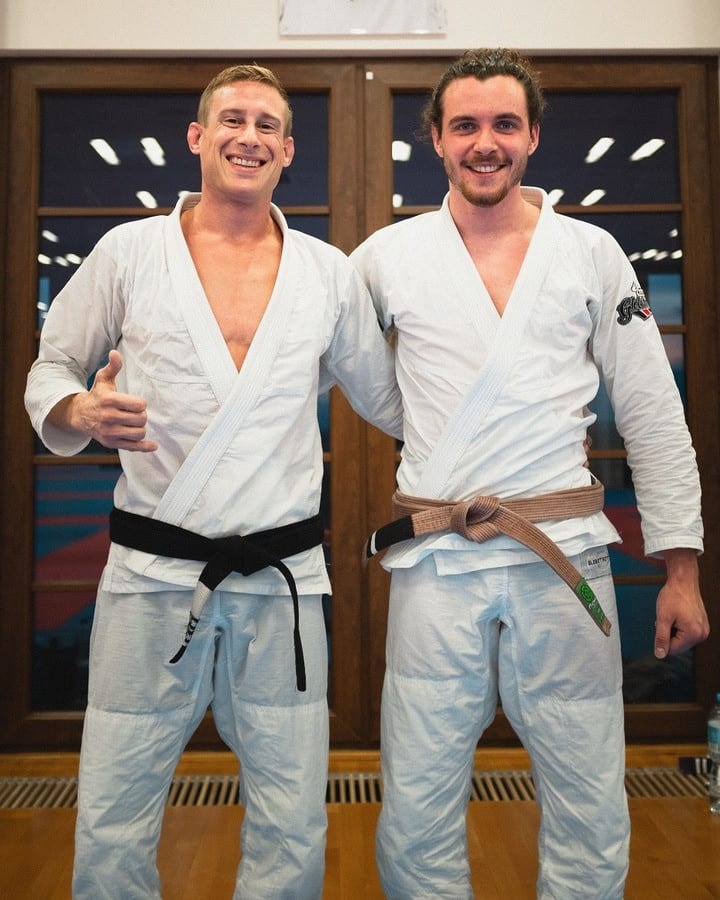
Stevie Antoniou
What are the things you enjoy about traveling?
The sense of adventure and the fact that I always learn a lot about myself. Whether it’s trying new things, exploring on my own, or meeting inspiring people with different views on life.
Can you give us some examples of experiences you had that makes it worth traveling and training?
Man, it doesn’t matter where in the world you are. Put on a gi and a smile and you are welcomed like family in most places. I was on a train in Portugal a few years ago and I was with my girlfriend at the time. We were there for a holiday and we definitely didn’t think to pack our gis. Before getting off the train, I see a poster with a quite famous face on it. Everything is in Portuguese so I can’t read what it says, but there’s a number on it. I call and find out that Royce Gracie is doing a two-day seminar that upcoming weekend. The guy says we are welcome to come, so we show up and it’s me, my girl, and 40 portuguese dudes. I was a blue belt at the time, and she had just started training. We didn’t have anything to train in, but after a day of asking around and searching everywhere for a gi, we found this guy who sold us two gis out of his trunk in a shady parking lot. When the first half of the seminar was finished, I’m talking to another participant and Royce joins the conversation and invites us to come to the beach with them. Long story short, we ended up hanging out with Royce Gracie and his friends that whole weekend. Beach trip, a few meals, and even the club haha. I can’t think of any other sport that this would happen in. Does the random guy who trains soccer get to go stand-up paddleboarding with Zlatan Ibrahimovic?
I have plenty of stories like this, but all I can say is that combining traveling and BJJ is an awesome time, and everyone should give it a shot.
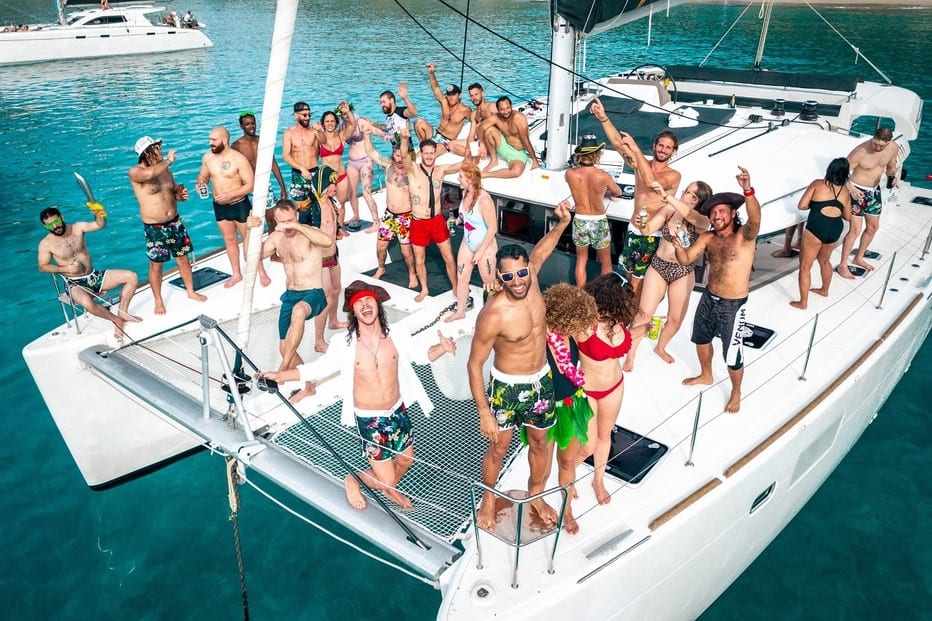
Stevie Antoniou
What has so far been the most surprising experience for you when traveling?
How easy it is! Once you get in to it the world isn’t as big and scary as you think.
Are you a budget traveller – and if so how do you plan for a cheap trip?
I like a bit of both. In general, I don’t spend a lot of money and try to find good value. I don’t mind spending €50 on a killer breakfast buffet every once in a while either though. When I’m at home and have a trip planned, I’m extra particular on not spending money on stupid things. Having something to look forward to keeps me motivated to save money for that specific trip. You don’t need that cigarette or caramel frappuccino with extra cream ;).
If you were to pass on travel advice to your fellow Globetrotters, what would it be?
Just freaking go. Book that ticket, make that call. Whatever it is. Experience is more valuable than most paydays. I’ve never been on a trip that made me regret going or spending that money.
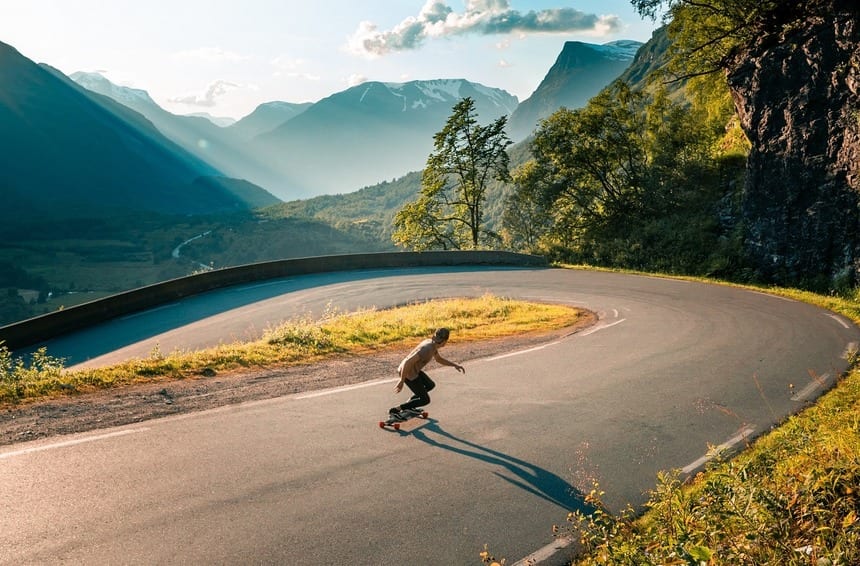
Photo by Stevie Antoniou
Featured affiliated academy: Sporto Klubas Laumžirgis, Lithuania BJJ

About the gym:
Where is the gym located?
The gym rents 300 m2 full-time in the southern part of Vilnius, Lithuania. Here you can see the precise location of our gym, Laumžirgis (which means “dragonfly” in Lithuanian): https://goo.gl/maps/DyP5Y6tSDmo. It’s not easy to find us when you’re there in person though – just contact us through Facebook and we’ll send you a detailed how-to-find-us guide.
How many people train in Sporto Klubas Laumžirgis, Lithuania BJJ?
It varies – sometimes greatly – depending on the time of the year. We had around 40 people show up at least once this January, for instance; some only have time to train few times per month, whereas others train consistently for 6+ hours per week. We consider ourselves an MMA club; about half of the people train Jiu Jitsu and wrestling, while others are only interested in boxing and striking, so we separate the classes and then people can build their own schedule based on what they enjoy.
Is the gym growing – if so by how many new members each month or year?
The gym has seen slow but steady growth over the past few years. In the early days it wasn’t uncommon to only have 2-4 people in the class. Now that we’re open to the public, we usually get 10-20 new people showing up each year when the new season starts, and several of them stay and become long-term members, which is what we’re looking for. Jiu Jitsu and combat spots in general is not something you can really learn in a month, or even a year.
What are the highest and lowest belt grades training?
In our Jiu-Jitsu classes we have blue and white belts. We also have higher belts visiting, but because they’re visitors they don’t count in our statistics.
When did the gym open?
Sporto Klubas Laumžirgis, Lithuania BJJ started as a group of enthusiasts interested in training together in 2007. Our club, Laumžirgis, was officially founded in 2009. We started renting a place full-time in 2014, and moved to our current location in 2017.

Some facts about you:
Name: Irmantas Radavičius
Age: 33
Belt: Blue
Profession: I teach Computer Science at Vilnius University
Years in BJJ: My first class was in 2007
Other martial arts: I started with Aikido back in 1999, tried a lot of different things over the years, and finally settled with MMA. Meaning, one accepts what is useful and rejects what is useless, and wants to be efficient in all ranges and areas of combat.
Currently living in: Vilnius, Lithuania
Originally from: Also Vilnius, Lithuania
Please tell us the story of how your gym came into existence:
The aikido community I started with introduced me to martial arts, for which I will always be grateful. However, that community was like a cult, with lots of hierarchy, bowing, and rituals, which is ultimately very at odds with what I’m about.
I was looking for a community where I would feel happy. I was also interested in self-defense and functional martial arts, since I wanted to feel safer and more confident; able to trust that what I do actually works. Aikido did not give me that, so I quit in 2006 and went through many clubs looking for somewhere to belong. Sometimes I didn’t like the teaching style, sometimes the community was a bit off, sometimes the techniques were very strange, and since I was a student at the time sometimes the classes were just too expensive.
Thus me and few other guys started training on our own. My first experience with Jiu Jitsu was in 2007, when I went to a grappling seminar by Ričardas Piepolis, a famous grappling coach in Lithuania. A lot of what we did after that was gleaned from articles, blogs, books, and videos. I remember watching Matt Thornton’s video series, as well as numerous others. Jiu Jitsu was just not really present in Lithuania as it is now. I was reading Matt Kirtley’s and Christian Graugart’s blogs, and when they announced they were going to Estonia to teach a training camp in 2009, I knew I had to be there. This is when we first started travelling to different places for training, and where we first met Priit Mihkelson, a then-purple belt from Estonia (now a black belt) who we now consider our head coach and mentor. From that point onwards, everything changed.
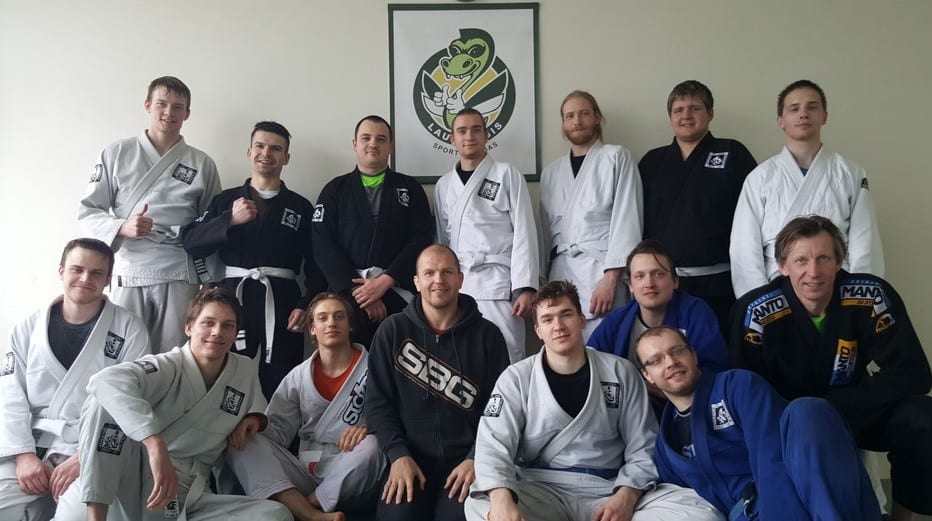
Sporto Klubas Laumžirgis, Lithuania BJJ
Tell us about the people that train in the gym – who are they?
We’ve had people from 15 to 56 years old, guys and girls (sadly only a few of them, but their number is growing as well), most of whom are hobbyists training for various personal reasons. Many of them work in IT-related fields, which, given my own profession, is not at all surprising! The majority of new members are brought to our club by friends.
Why do they train in the gym?
People in our club train for various reasons (social, safety, health, fun, etc.) that tend to change over time. Most newcomers come because of self-defense, or because they want to try something new and maybe find a new hobby. Once they decide to stay and are there for a long time, however, I think it evolves into something different – it is always the case that they simply like the activity and the community, and all the benefits those two things bring into their life.
What are some of the challenges of running a BJJ gym in general and in your location specifically?
Since we’re a small gym we do most of the things ourselves, including book-keeping, cleaning, repairs, etc. We don’t have many staff members, and that limits us since there are only so many things that can be done per day, and only so many classes that one can run and teach. Retaining our members thus becomes really important, as otherwise we have to start learning/teaching everything from scratch again, and at the same time it’s very hard to lose a member whom we consider a necessary part of the community. There are many activities in Vilnius, and it’s not uncommon for people simply to decide not to pursue martial arts anymore and take up something else. The long grind is sadly not for everybody.
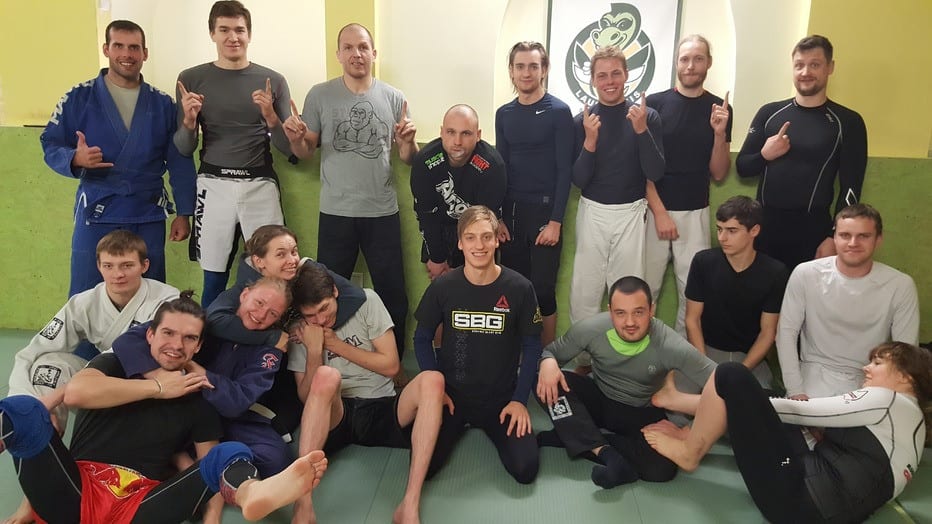
How do you see the future for BJJ in your area?
BJJ has been constantly growing here over the past few years. When we started there were no black belts at all in Lithuania; now there are. I suspect and hope that BJJ will continue to grow and will also continue to evolve in every sense, including techniques, coaching methods etc.
What’s the best thing about your gym?
Unarguably, it’s the community that we have. It’s very important to have a space where you feel welcome and safe, and it becomes even more important if you train martial arts, which by definition is a risky and dangerous activity. No building and no mat space can ensure that by itself; it is always about the people. It’s the students that empower any coach and make his work worthwhile, it’s the training partners who help you get better, and are there when you succeed and you struggle, and so on. Personally, I consider the people I train with to be some of my best friends that I’m happy to have.
What would you recommend Globetrotters to see in your area apart from the inside of your gym?
Vilnius is a great city. If you’re into museums and architecture, we have our Old Town and some sights that date back to the Middle Ages. Lithuania is a small country, meaning travel distances are relatively small – we have beautiful nature and some places to visit in the countryside, too. If you’re into food, there are many cuisines in Vilnius. If you want to try more traditional Lithuanian food, try some dishes from potatoes and/or meat, and we have good beer too. If you’re into overall leisure there aren’t many things that you can’t find in Vilnius; we have big commercial and leisure centers, with restaurants, cafes, cinemas, and lots of athletic and fun activities.
Really, come to visit, and when you do you are most welcome to come to our gym and say hi!

